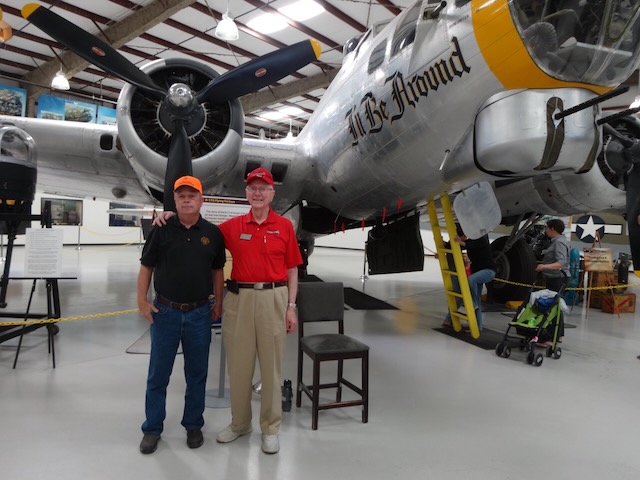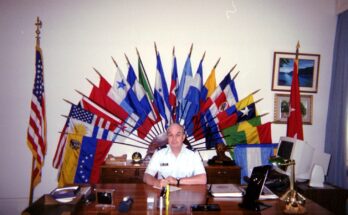
In 2015, I met Richard Bushong. He was a B-17 pilot volunteering as a docent at the Pima Air and Space Museum near Tucson. Richard was a slim and trim 93 year-old standing in front of a beautifully restored B-17. He delivered to museum visitors a comprehensive story of the B-17 in WWII. Richard survived 25 missions over Europe before his 21st birthday. He lost many friends along the way. Many years after the war, his grandson researched the seven different B-17s his grandfather had flown. He used Richard’s flight log as well as the tail numbers of the aircraft and other references. He found that only one of the seven bombers had survived the war. That B-17 had nose art naming it “The Johnny Walker”. Richard said he had been sipping scotch whiskey since finding that out.
2015 was ten years ago and I was sure I could find Richard’s obituary either on the museum’s website or in Tucson funeral home obituaries. Was I ever wrong! I found that Colonel Richard Bushong, celebrated his 102nd birthday at a ceremony in Tucson, on 21 March, 2025. When asked the secret of a long life, Richard said the secret was having a young girlfriend. His girlfriend was 97 years old.
We have lots of books and movies about our B-17s and B-24s in Europe and, towards the end of WWII, our B-29s flying long missions in the Pacific. In fact, the most effective heavy bomber of WWII was the British Lancaster. It had a longer range and a larger bomb load than either the B-17 or the B-24. The Lancaster flew many more bombing missions than our American bombers as it started attacking the enemy in April, 1941, before our 8th Air Force flew its first bombing mission on 4 July, 1942.
The B-29 was a major advancement in bomber design. It was bigger, faster, longer in range and carried a heavier bomb load than any previous bomber. It was also capable of cruising at altitudes beyond the reach of Japanese fighter planes.
The B-29 is most famous as the airplane that dropped two atomic bombs on Japan. The Army Air Force Commander in the Pacific was General Curtis LeMay. He had been transferred to the Pacific after his success leading “The Mighty Eighth” in the bombing of Europe. LeMay had not been informed about the atomic bomb until shortly before its planned use. He saw no need for the atomic bombs as he preferred to continue his fire-bombing campaign against Japanese cities. Day after day, LeMay launched fleets of B-29s loaded with incendiary bombs destroying city after city. In fact, the most destructive bombing attack of WWII was not either Hiroshima or Nagasaki, rather the firebombing of Tokyo the night of 9-10 March, 1945 which killed an estimated 100,000 people and destroyed 16 square miles of the city.
Nearing the end of the war, the Army selected a new bomber to replace the B-29. The new bomber was designated the B-32. The Army signed a contract with Consolidated Aircraft Corporation for 1500 of the new bombers. After the war, interest waned in the purchase of a new bomber. The Army canceled the contract after 188 of the new bombers were built. All of the aircraft, some brand new from the assembly line, were sent directly to salvage, not even one remains today.
The Pima Air and Space Museum, near Tucson, is one of the largest and most comprehensive in the world. The museum encompasses many acres of unique and famous aircraft both indoors and outdoors. It is well worth the $22.50 cost of admission and a visitor needs two days to do it justice.
Colonel Richard B. Bushong’s autobiography, “My Wars, A Story of Triumph and Tragedy” is available at Amazon.com. It is well worth reading.



